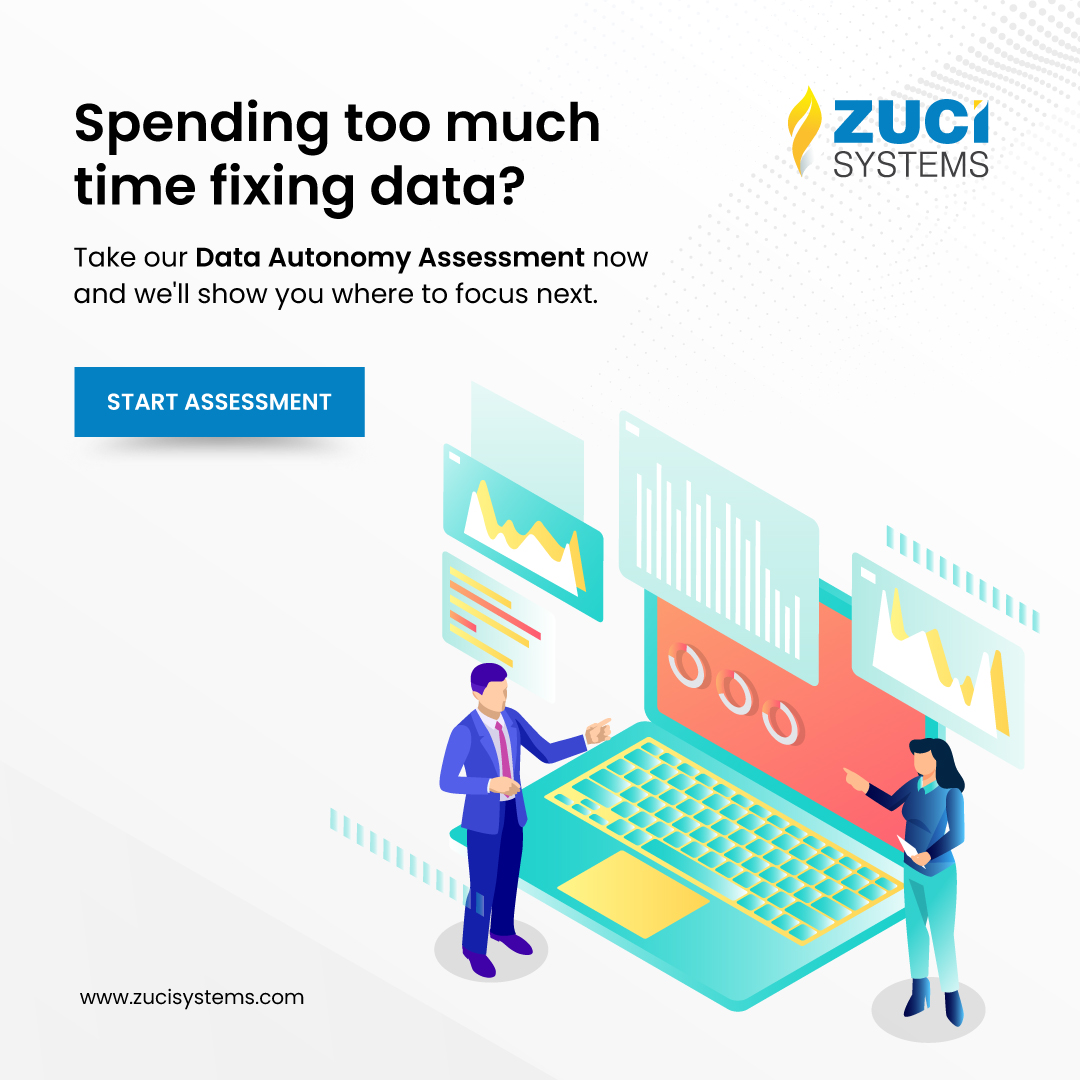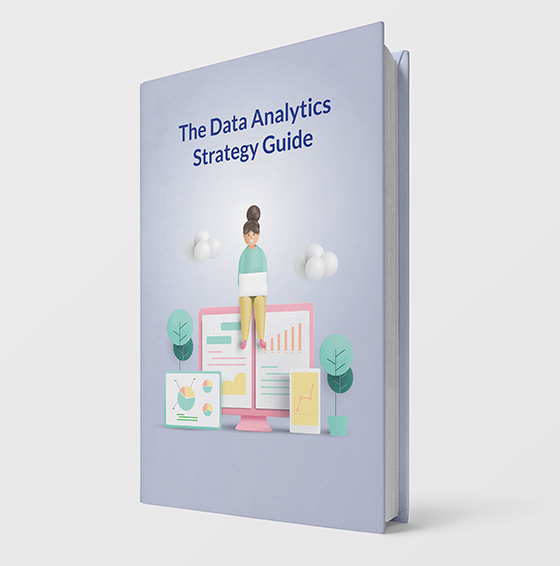8 Misconceptions About Enterprise Data Management In 2025
I write about fintech, data, and everything around it
Discover the 8 most common misconceptions about enterprise data management in 2025 and learn how to overcome them for successful data governance and decision-making.
Organizations today receive and retain vast amounts of data, constantly expanding in volume and evolving in variety.
IDC predicts that by 2025, the amount of information managed by enterprises worldwide will have increased by 61%, reaching 175 zettabytes. Businesses that wait to develop an EDM strategy risk being non-compliant, losing their edge in the marketplace, and seeing a drop in income.
Enterprise Data Management (EDM) Misconceptions: Importance of enterprise data management in today’s business world
Enterprise Data Management (EDM) is how a company manages the information it collects and uses for internal operations, customer interactions, and software applications. Enterprise Data Management’s primary objective is to build and sustain trust in all stored data.
Successful businesses need access to relevant, reliable data to make educated decisions, plan strategically for the future, and achieve their goals.
Efficient data management (EDM) is critical because it establishes a standardized method for companies to maintain, audit, store, protect, access, and exchange their data. This method simplifies the process of finding, analyzing, and using a company’s data so that it can make timely, informed decisions.
If information is not adequately cataloged or filed, it might lead to the following issues:
- Operations inaccuracies and inefficiencies
- Inconsistent findings and falling confidence in investments
- Disparities and discrepancies in the news coverage
- Misuse of resources trying to harmonize disparate data stores and workflows.
Managing data is a difficult task for some businesses. This can make it challenging to identify, catalog, and store possessions.
However, this task may be completed with the help of a dependable technology partner with the necessary knowledge, methods, and talent to design business data management solutions.
Business intelligence (BI) and advanced analytics have been promising a future where data is easily accessible and transformed into knowledge and insights for making quick, reliable choices for decades. Each department, from the executive suite to the front lines, depends mainly on technology teams to help them decipher data and extract meaning from dashboards and other reports.
Several misconceptions that have gained widespread acceptance as “facts” directly result from these restrictions. These misunderstandings have hampered the efforts of many companies to implement self-service analytics, reducing their access to and trust in the data they need to make pivotal decisions.

Misconception 1: Data governance is not necessary for effective data management.
Data inconsistencies across an organization’s systems must be addressed with data governance. For instance, sales, logistics, and customer support databases may all have separate records for the same consumer. That could make it more challenging to integrate data and lead to data integrity problems, which could compromise the reliability of business intelligence (BI), corporate reporting, and analytics tools.
The reliability of business intelligence (BI) and analytics may also be compromised if data inaccuracies are not detected and corrected. In order for EDM to work, good data governance is required.
Goals of Data Governance
- To eliminate data silos.
- To ensure data is used correctly, both to prevent data errors from entering systems and to prevent the misuse of customers’ personal data and other sensitive data.
- Benefits data scientists, other analysts, and business users can expect to reap from these efforts, among others, are higher quality data, decreased data management expenses, and easier access to relevant data.
The importance of data governance for businesses
- To prevent data from being stored in silos across teams and divisions.
- A unified view of data requires that its components be defined consistently.
- Find and correct data set flaws to increase data quality.
- Improve the precision of analytics for sound decision-making.
- To enforce policies that reduce the likelihood of data mistakes and abuse
- To facilitate adherence to applicable privacy laws and other requirements about data.
Data governance examples that show how to make data management better
1. Security
Problem: Finding a happy medium between data security and ease of use is essential when formulating a data governance policy. Picture this: your company provides medical services. Protecting health records is essential since they contain some of the most private information a person may have.
Better solution: Your data governance team should include defining who needs access to which data and implementing those restrictions.
2. Usability
It is crucial to simplify and standardize data access and interpretation. Data organization that is simple and logical should be the norm, but far too many systems today still need to provide this.
Problem: Make sure you’re taking the advice of your team members into account. Suppose you’d rather have your sales team use a centralized customer relationship management (CRM) application rather than a hardcopy notebook. In that case, it’s essential to find out why they’re still using the notebook.
Better solution: Some team members would benefit from further guidance and training, especially regarding data and database management.
3. Protection and Archiving
Poor quality data at scale leads to subpar business decisions. Data quality needs to keep up with the increasing speed and sophistication with which data may be summarised, manipulated, and analysed.
Problem: Some data within any given firm will require constant employee access, while others will be needed far less frequently. Some data may become so infrequently used that it could be safely discarded or preserved after some time.
Better solution: An effective data governance strategy will identify these data types and provide explicit rules for working with them. Data safety must be guaranteed, and at the same time, it must be simple to locate when required.
Misconception 2: Data quality is not a priority for enterprise data management
Currently, data is a major talking point in the corporate world. This data is among the most important assets at the disposal of modern businesses. However, good data is essential for making informed decisions. Erroneous information is, at best, irrelevant. If things get bad enough, it can cause businesses to make mistakes that end up costing a lot of money. IBM calculates that the annual loss to the U.S. economy due to inaccurate data is $3.1 trillion. Employees lose time fixing mistakes and incorrect information, which leads to unhappy clients, and so increases costs.
Consequently, the distributed master data will be inaccurate in the absence of rules or inspections for data quality. When a company lacks the ability to interpret its data, it cannot make sound strategic decisions. Customers may get dissatisfied and operations may be slowed.
Organizations may improve validity, consistency, and correctness across the data lifecycle with the use of data quality guidelines. Since data is ever-evolving and businesses may have several users updating master data at once, data quality rules are essential for minimizing the risk of human error and maximizing company-wide consistency.
Quality data is among the best methods for getting to know your customers. Data quality is always of the highest priority in EDM. Data quality can benefit in many ways:
- With high-quality data at your disposal, you can provide superior service to your clientele. Customers that have a positive interaction with your business are more likely to buy again and spread the word about it.
- Your company’s adaptability depends on accurate data. You can anticipate shifts in the market and seize opportunities or meet obstacles head-on before the competition does.
- Good data quality can be maintained with consistent management, but only if you do so. The good news is that cutting-edge data solutions and platforms can streamline and automate your routine data validation and administration tasks.
Prioritize data quality. Data quality is an enterprise-wide issue, Data quality affects everyone, hence a cross-functional strategy is needed. Emphasize simple ways employees can obtain and comprehend data.
Misconception 3: Enterprise data management is only relevant to large organizations
Whether you’re a large, medium, or small business, data governance is essential if your data is flowing via fragmented systems and you lack the tools to oversee and govern your master data. The importance of an Enterprise data management strategy cannot be overstated when several business processes depend on the same data.
Further, data quality checks should be maintained to ensure compliance with industry standards on the sharing of data with business trading partners. Even though they face the same difficulties as larger companies who don’t have an EDM strategy, most small businesses view this as an issue solely for larger ones. Do you intend to wait until things get out of hand before implementing an EDM strategy as your company expands and the amount of information and the variety of applications you use both grow? No, we certainly don’t want it to happen!
Data management is useful for any business that has enterprise data that needs to be shared between different departments or platforms. In the case of client information, even the smallest businesses likely make use of a customer relationship management system, finance department records, and information gathered by the company’s training, support, and service departments. Consider the possibilities opened up by a complete picture of a customer’s interactions and experiences with your business.
EDM applies to both small and mid-market organizations. It improves processes and reduces human errors.
Why do small businesses need data management?
Responsiveness: Small firms can quickly adapt to client behavior and data. Proper data management enables small firms to have real-time market intelligence, enabling them to adapt to market developments.
Small firms can benefit from appropriate data management since larger companies have far more infrastructure and complications, which take much longer to adjust, even with good data management.
Cost: Due to their limited resources, smaller enterprises must be cost-effective. Data management helps small firms minimize resource waste and natural resources more effectively.
Cyber security: Small firms are vulnerable to cyber-attacks because they assume their data is less valuable than larger companies. Cyber-attacks can ruin smaller firms. Data may remain operational and compatible with data governance rules with effective management information strategies and solutions.
Examples of a few Organizations that have begun to implement enterprise data management
Uber
Uber uses business intelligence to make crucial decisions about the organization. They are using surge pricing as an illustration. When demand rises while traffic conditions vary, rates adapt in real-time thanks to algorithms that track traffic conditions, travel times, driver availability, and consumer demand. Airlines and hotels use real-time dynamic pricing to modify prices based on demand.
Miniclip
Miniclip uses EDM to improve user experience. It emphasizes client retention to make games extra profitable and assist business growth due to its nature and sector.
EDM reporting, analysis, experimentation, and advanced analytics data products allow the organization to measure and incorporate successful product features in future initiatives while deleting or enhancing problematic features.
Misconception 4: Enterprise data management is a one-time effort
The most widespread myth is this one right here. A complete Enterprise Data Management (EDM) rollout could be undone if you buy into this myth.
It’s important to remember that data management is not a one-and-done task; rather, it’s a continuous process that should be reviewed and revised frequently.
A common misconception is that an EDM solution will automate and streamline your master data procedures. In any case, an information governance framework is required for this to work. Among the tasks at hand are pinpointing the locations of master data that need oversight, developing operational guidelines, and assigning responsibilities.
The good news is that this is just the beginning! Since the Enterprise Data Management platform provides the energy for the rest of your operations, the framework should incorporate the method of assuring continual data quality. Automation and established company practices will undoubtedly be at your disposal. However, you must adapt your company to the changing market. Therefore, it is necessary to review the procedure and the guidelines periodically.
Misconception 5: Enterprise data management is the responsibility of IT alone
Many businesses incorrectly assume that their IT department is responsible for data management. Even if the IT team does a flawless job, the entire reporting effort could fail due to a lack of confidence and knowledge on the practical side. For this reason, the IT and the functional teams must have open communication lines from the start. The organization’s ability to create responsible data management practices will be aided by making this a priority.
There is no software or hardware component to EDM. Data users and owners from various departments and data domains should collaborate on the strategy’s development. Most businesses make the mistake of letting their IT department handle their EDM strategy. If the IT department implements a framework without first learning about the business’s procedures and the difficulties experienced by various departments, it’s possible that not all of those procedures will adopt the new strategy, and some departments’ employees may be resistant to the idea altogether.
Communication and organizational change management are essential for the successful implementation of any data governance program. This is a must for any EDM system to function properly. However, the IT department cannot be given exclusive responsibility for data governance, despite their involvement at every stage of the process. Having designated individuals from various business units participate in the data governance initiative’s framework development from the outset is crucial for ensuring a seamless transition to the new EDM approach.
Team members need to share their expertise and work together to complete assignments. When people work together, they can accomplish more, save money, and resolve conflicts more easily.
Gains from Clear and Consistent Interpersonal Communication
- It helps build confidence.
- This boosts loyalty among workers.
- It makes team members more invested in their work.
- It also boosts productivity and teamwork.
- Clever ideas are sparked through open dialogue.
- Problems are fixed.
- Improved connections with customers are one of the big ones.
Misconception 6: Enterprise data management is only about technology
Managing data effectively is less a matter of technology and more one of knowing how your company’s procedures are supposed to function.
Data management encompasses various activities, such as data collection, processing, validation, and storage. Bringing together structured and unstructured data from a variety of sources. They are keeping data safe and accessible at all times.
An effective data management system includes the following:
1. Data Governance
To better keep tabs on data and link it to relevant information for future retrieval, businesses can benefit from using solutions such as Talend, Azure Data Catalog, and Informatica. Metadata is helpful because it improves data structure by arranging data to maximize its usefulness. Data tracking technologies aid organizations in identifying and cataloging their various data holdings. All of these components working together make large databases useful—explained that data governance focuses on the three aspects of data management: storage, accessibility, and integrity. Organizations can ensure the accuracy of their data by implementing a data governance strategy.
2. Integration of Data
Data from several sources may be brought together with the help of Azure Data Factory, Logical Apps, and Functions, all of which provide intuitive user interfaces. For instance, accounting software and customer relationship management (CRM) data may appear unrelated until arranged together. However, when combined, the information from these various sources has the potential to provide a complete view of a company’s income and cash flow. This holds for any seemingly unrelated data sets that turn out to be interconnected.
3. Intelligence in Business
Microsoft Power BI, Tableau, Azure Synapse Analytics, and Snowflake are some business intelligence (BI) solutions that can make data more accessible, secure, and actionable for decision-makers. No human can ever manually go through such an extensive database to extract useful information. Hence BI tools are required.
Process, Types & All Golden Rules to Follow for Data Migration
Migrating your data can be both simple and complex process. It depends on users, their requirements, structure of data and environment they are migrating to. Data migration have limitations, requirements and as well as good practices. This blog post is about all you need to know about data migration.
Misconception 7: Enterprise data management is a cost, not an investment
When the market for MDM software was younger, it was more expensive than it is today. However, there are now options for businesses of all sizes and in a variety of different industries and situations. Most of our clients also tell us that EDM software is treated as an operational cost instead of a capital expenditure. Customers can keep using the solution after implementation without incurring any further fees.
In recent years, EDM software has been considerably more reasonably priced, making it a viable alternative to more expensive methods of data management. Traditional software may only increase operational expenses when all of the accompanying equipment, storing, licensing, IT administration, data backup, energy, and security expenditures are factored in. There will be an initial investment for the installation and migration of EDM software, but this is a nominal expenditure considering the long-term benefits.
In what ways can businesses leverage data to their advantage?
Various business sectors have varying data needs and can thus benefit from data in various ways. In manufacturing companies, for instance, machine and system logs can shed light on productivity and efficiency. Leaders can simplify crucial operational areas by identifying the bottlenecks and working to eliminate them.
In recent years, the selling price of EDM systems with managed implementations has decreased as the market has matured and more companies have begun to offer such services. By having the vendor host the solution and provide the services, businesses can save money on infrastructure costs, upkeep, and troubleshooting.
And then there’s the issue of winning over your risk-averse, money-conscious upper management. Instead of going all in with a massive overhaul, which can be both time-consuming and costly, you can test the waters with a smaller-scale deployment in a single use case or a master data area with little impact. If an EDM system can be shown to be useful and effective in one area, it will be easier to get approval for further financing from upper management to implement the system in other areas.
Real-world applications of data management
Flipp
Shopping app Flipp initially used Amplitude to personalize marketing messages. Data democratization was a bonus for the Flipp team. Their growing marketing team got reliable information faster than previously. They could respond to campaigns faster without waiting for another team to gather and deliver data.
Instacart
This delivers groceries. Instacart had data efficiency issues. Self-built software and a database managed their data. Getting the skills to communicate and respond to demands took time and frustration. Furthermore, Instacart’s data volume has risen beyond the capabilities of its old management system. Amplitude helped Instacart combine data from various tools. Amplitude efficiently handled its expanding data load, thus helping them with product developments instead of getting mired down in creating and maintaining their own tools.
Misconception 8: Enterprise data management is a static field
The implementation of Enterprise Data Management as a whole could be undone if you buy into this myth. Data management adapts to challenges.
In today’s digital economy, data management systems must develop to fit your organization’s needs. Traditional data management makes scaling capabilities difficult without impacting governance or security. Digital data management software should overcome numerous obstacles to finding credible data.
Challenge 1: Growing data volumes
Each division in your company has access to different kinds of data and has different requirements for extracting maximum value from that data. Data preparation and ongoing database or file maintenance are traditionally handled by IT in traditional models. It’s easy for a company to lose track of its data as it grows, both in terms of what it has and where it is stored, as well as how it may be put to use.
Challenge 2: Keeping Up with Regulations
Keeping tabs on whether or not the correct information is being used is difficult in an era of ever-evolving compliance regulations. Employees of a company require easy access to information on the types and sources of data they may and cannot use, as well as details about the collection, storage, and disclosure of personally identifying information (PII) following applicable laws and policies.
Challenge 3: Emerging Functions of Analytics
More and more employees will be expected to access and interpret data as the company shifts to a data-driven decision-making model. The inability to make sense of naming, large data structure, and databases is one of the most common consequences of needing more analytic training. The data’s potential worth is reduced or lost if it cannot be analyzed because its conversion is too time-consuming or difficult.
While it is true that data owners should first create the rules and process for an MDM project, it is also their responsibility to maintain and update the policies and guidelines as the business evolves. To guarantee the success of your MDM installation and the subsequent implementation by the business, you need a sound data governance architecture that engages the necessary individuals for governance and execution.
Conclusion
Enterprise data management, as discussed above, can have many positive effects, including better data quality and accuracy, once the myths surrounding it are dispelled. Less time and energy will be spent on master data management, and decision-making will improve clearly. Investigate whether the absence of an EDM procedure is the cause of problems like operational failures, frequent consumer complaints, and penalties related to data inaccuracies.
Zuci Systems is a leading provider of enterprise data management services. With our expert team and industry-proven solutions, we can help your business unlock the full potential of your data. From data engineering and quality to analytics and insights, our comprehensive services will help you transform your business and drive value.
Related Posts

























